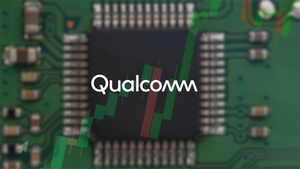No relapses have occurred in six of six treatment-arm patients, four with follow-up past six months; one of four control-arm patients relapsed at six months and two others required clinical intervention
No patient-derived hematopoietic cells detected in six of six treatment-arm patients, indicating complete elimination of target cells, versus zero of four control-arm patients
AML patient with detectable disease post-transplant converted to no detectable disease following treatment with TSC-101
Patients enrolled up to the third and final dose level in both treatment arms with no dose limiting toxicities
Company to host virtual KOL event on Monday, December 11, at 8:00 a.m. ET to discuss the data presented at the ASH Annual Meeting and Exposition
WALTHAM, Mass., Dec. 09, 2023 (GLOBE NEWSWIRE) -- TScan Therapeutics, Inc. (Nasdaq: TCRX), a clinical-stage biopharmaceutical company focused on the development of T cell receptor (TCR)-engineered T cell therapies (TCR-T) for the treatment of patients with cancer, today announced a poster presentation at the 65th American Society of Hematology (ASH) Annual Meeting and Exposition. The poster highlights initial data from the Phase 1 multi-arm clinical trial evaluating TSC-100 and TSC-101, which are designed to treat residual disease and prevent relapse following hematopoietic cell transplantation (HCT) in patients with acute myeloid leukemia (AML), myelodysplastic syndromes (MDS), or acute lymphocytic leukemia (ALL) (NCT05473910).
“We are excited to present initial clinical data in our heme program, with six patients in our treatment arms and four patients in our control arm. Complete donor chimerism and MRD negativity, two favorable indicators of treatment success, were achieved and maintained in all six treated patients, four of whom have been on the study for over six months. In contrast, these indicators were not achieved in any of the four control-arm patients. In addition, one of the control-arm patients relapsed at six months, and two other control-arm patients required clinical intervention due to worsening chimerism, a sign of potential future relapse,” said Debora Barton, M.D., Chief Medical Officer. “We have now enrolled and dosed patients up to the third and final dose level with no DLTs observed to date and no safety signals thus far, indicating that the third dose level will likely be the recommended Phase 2 dose. After establishing the recommended Phase 2 dose, we plan to open expansion cohorts at that dose to further characterize safety and evaluate translational and efficacy endpoints. There are currently 10 active clinical sites, and additional sites are in the process of being activated to participate in these expansion cohorts.”
“Hematopoietic cell transplantation is currently the best treatment option for many patients suffering from AML, MDS, and ALL, as approximately 60% of patients are cured by this procedure,” said Gavin MacBeath, Ph.D., Chief Executive Officer. “Unfortunately, for patients who relapse following transplantation, the prognosis is very poor. We have designed TSC-100 and TSC-101 to address this unmet need and increase the success rate of transplantation. We are very encouraged by these early data as they indicate that our therapies are working as designed. The translational data show that our cell therapies are eliminating all residual patient-derived malignant, pre-malignant, and benign cells, which are the cells that drive relapse. We are grateful to all the patients and their families who are participating in this trial and look forward to sharing more data in 2024 as the study continues to enroll.”
The Phase 1 trial is a multi-arm dose escalation study evaluating TSC-100, TSC-101, or HCT alone in patients with AML, ALL or MDS undergoing haploidentical allogeneic HCT with reduced intensity conditioning. Patients enrolled in Dose Level 1 receive a single dose of either TSC-100 or TSC-101 approximately 21 days post-transplant. Patients enrolled in Dose Level 2 receive the same dose of TSC-100 or TSC-101 approximately 21 days post-transplant, followed by a second dose administered 40 days after the initial dose. For patients in Dose Level 3, the second dose is escalated four-fold. Primary endpoints include safety and dose-finding, and secondary and exploratory endpoints include relapse rates versus standard-of-care as well as qualitative biological readouts, including MRD and donor chimerism. MRD specifically measures malignant cells, to identify any residual disease present in a patient, and donor chimerism measures a combination of malignant, pre-malignant and normal cells, measuring any remaining patient-derived hematopoietic cells.
Key Poster Highlights:
TSC-100 treatment arm (N=3 T-ALL, AML, AML)
- 3/3 patients treated with TSC-100 achieved complete donor chimerism and MRD negativity.
TSC-101 treatment arm (N=3 TP53 mutated MDS, AML, B-ALL)
- 3/3 patients treated with TSC-101 achieved complete donor chimerism and MRD negativity, including a TP53-mutated MDS patient who remained with no detectable disease for over seven months post-HCT.
- One patient with AML was MRD-positive following HCT and converted to MRD-negative following treatment with TSC-101.
Four control arm patients (MDS, MDS, TP53-mutated MDS, AML) have been enrolled and received standard of care HCT alone:
- One TP53-mutated MDS control-arm patient evolved with MRD positivity and worsening mixed chimerism, finally experiencing disease relapse approximately six months after transplantation.
- Two MDS control-arm patients developed worsening mixed chimerism that prompted early withdrawal of immunosuppression, which was complicated by grade 1 or grade 3 skin graft-vs-host disease.
- 0/4 of the control-arm patients achieved and maintained complete donor chimerism.
Higher sensitivity assays used to detect the activity of T cells:
- Donor chimerism detected by high-sensitivity next-generation sequencing assay (AlloHeme) with limit of detection 0.13%.
- MRD detected by next-generation sequencing with limit of detection of 0.05-0.1%.
A copy of the poster can be accessed on the “Publications” section of the Company’s website at www.tscan.com.
Virtual KOL Event
The Company will host a virtual KOL event featuring Monzr M. Al Malki, M.D., on Monday, December 11, 2023, at 8:00 a.m. ET to discuss the data presented at ASH. Dr. Al Malki is an Associate Professor in the Department of Hematology & Hematopoietic Cell Transplantation and Director of the Unrelated Donor Bone Marrow Transplant and Haploidentical Transplant Programs at City of Hope. Details for attending the live event can be found here.
About TScan Therapeutics, Inc.
TScan is a clinical-stage biopharmaceutical company focused on the development of T cell receptor (TCR)-engineered T cell therapies (TCR-T) for the treatment of patients with cancer. The Company’s lead TCR-T therapy candidates, TSC-100 and TSC-101, are in development for the treatment of patients with hematologic malignancies to eliminate residual disease and prevent relapse after allogeneic hematopoietic cell transplantation. The Company is also developing multiplexed TCR-T therapy candidates for the treatment of various solid tumors. The Company has developed and continues to build its ImmunoBank, the Company’s repository of therapeutic TCRs that recognize diverse targets and are associated with multiple HLA types, to provide customized multiplexed TCR-T therapies for patients with a variety of solid tumors.
Forward-Looking Statements
This release contains forward-looking statements within the meaning of the Private Securities Litigation Reform Act of 1995, including, but not limited to, express or implied statements regarding the Company’s plans, progress, and timing relating to the Company’s hematologic malignancies program; the Company’s current and future research and development plans or expectations; the structure, timing and success of the Company’s planned preclinical development, submission of INDs, and clinical trials; the potential benefits of any of the Company’s proprietary platforms, multiplexing, or current or future product candidates in treating patients; the Company’s beliefs about operating expenses and that it will have capital to fund the Company into 2026; and the Company’s goals and strategy. TScan intends such forward-looking statements to be covered by the safe harbor provisions for forward-looking statements contained in Section 21E of the Securities Exchange Act of 1934 and the Private Securities Litigation Reform Act of 1995. In some cases, you can identify forward-looking statements by terms such as, but not limited to, “may,” “might,” “will,” “objective,” “intend,” “should,” “could,” “can,” “would,” “expect,” “believe,” “anticipate,” “project,” “target,” “design,” “estimate,” “predict,” “potential,” “plan,” “on track,” or similar expressions or the negative of those terms. Such forward-looking statements are based upon current expectations that involve risks, changes in circumstances, assumptions, and uncertainties. The express or implied forward-looking statements included in this release are only predictions and are subject to a number of risks, uncertainties and assumptions, including, without limitation: the beneficial characteristics, safety, efficacy, therapeutic effects and potential advantages of TScan’s TCR-T therapy candidates; TScan’s expectations regarding its preclinical studies being predictive of clinical trial results; the timing of the initiation, progress and expected results of TScan’s preclinical studies, clinical trials and its research and development programs; TScan’s plans relating to developing and commercializing its TCR-T therapy candidates, if approved, including sales strategy; estimates of the size of the addressable market for TScan’s TCR-T therapy candidates; TScan’s manufacturing capabilities and the scalable nature of its manufacturing process; TScan’s estimates regarding expenses, future milestone payments and revenue, capital requirements and needs for additional financing; TScan’s expectations regarding competition; TScan’s anticipated growth strategies; TScan’s ability to attract or retain key personnel; TScan’s ability to establish and maintain development partnerships and collaborations; TScan’s expectations regarding federal, state and foreign regulatory requirements; TScan’s ability to obtain and maintain intellectual property protection for its proprietary platform technology and our product candidates; the sufficiency of TScan’s existing capital resources to fund its future operating expenses and capital expenditure requirements and execute on upcoming anticipated milestones into 2026; and the effect of the COVID-19 pandemic, including mitigation efforts and political, economic, legal and social effects, on any of the foregoing or other aspects of TScan’s business or operations; and other factors that are described in the “Risk Factors” and “Management’s Discussion and Analysis of Financial Condition and Results of Operations” sections of TScan’s most recent Annual Report on Form 10-K and any other filings that TScan has made or may make with the SEC in the future. Any forward-looking statements contained in this release represent TScan’s views only as of the date hereof and should not be relied upon as representing its views as of any subsequent date. Except as required by law, TScan explicitly disclaims any obligation to update any forward-looking statements.
Contacts
Heather Savelle
TScan Therapeutics, Inc.
VP, Investor Relations
857-399-9840
hsavelle@tscan.com
Joyce Allaire
LifeSci Advisors, LLC
Managing Director
617-435-6602
jallaire@lifesciadvisors.com







